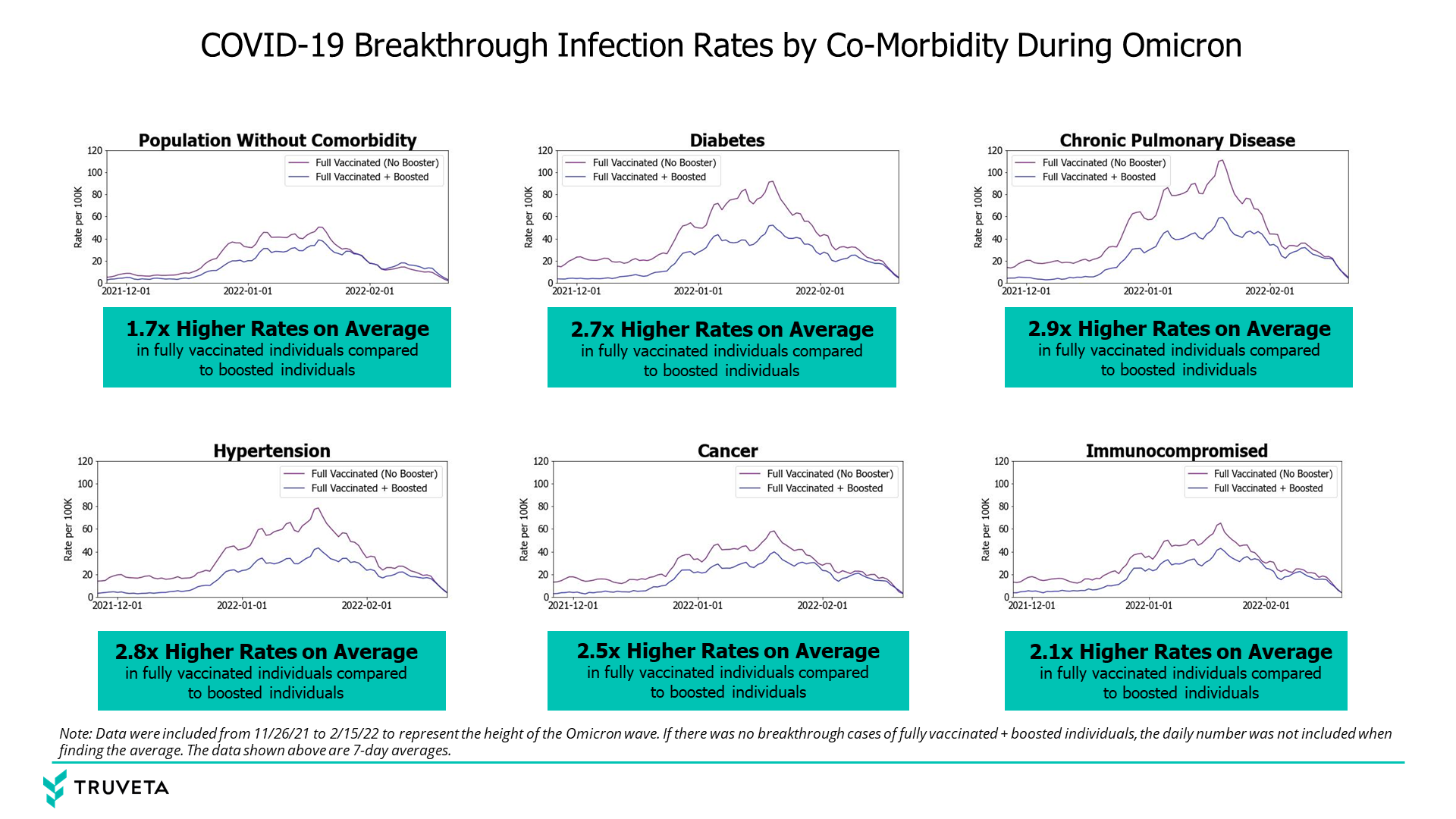After looking at the Truveta COVID-19 dashboard, our Research Team was curious about the breakthrough rates for specific disease types and how they compared between fully vaccinated individuals with and without booster shots. The team took the data in the dashboard and investigated further.
Methods
Fully vaccinated was defined as 14 days after one dose of Janssen or 14 days after two mRNA doses at least 17 days apart for Pfizer and 24 days apart for Moderna. The time between doses for Pfizer and Moderna vaccines include a four-day buffer allowance from the CDC.
Additionally, discordant doses (mix and match) were included as fully vaccinated. A booster dose was defined as 14 days following an additional dose, which occurred over 100 days after the most recent vaccination.
Breakthrough infections were defined as a COVID-19 infection for an individual who was either fully vaccinated or fully vaccinated with a booster.
We calculated the fully vaccinated and boosted breakthrough rates over time for people with immunocompromising conditions, diabetes, hypertension, cancer, and chronic pulmonary disease at the time of their first vaccination.
We also calculated these rates for people who did not have any of these co-morbidities. If a person had multiple diseases listed above, they were included in both disease groups. We restricted our analysis to the Omicron wave (November 26, 2021 – February 15, 2022).
We found the average daily ratio of fully vaccinated breakthrough rates to boosted breakthrough rates over the time period to get a rate of increased risk during the Omicron wave.
During days where no breakthrough cases occurred, this daily value was not included in the average.
Results
For the population with no diseases, we found the breakthrough COVID-19 infection rates to be 1.7 times higher for the fully vaccinated (no booster) population, compared with the boosted population on average. This ratio increased for all disease groups investigated. Individuals with Chronic Pulmonary Disease had the highest ratio at 2.9.

These are preliminary research findings and not peer reviewed. Data are constantly changing and updating. These findings are consistent with data from March 8, 2022.
